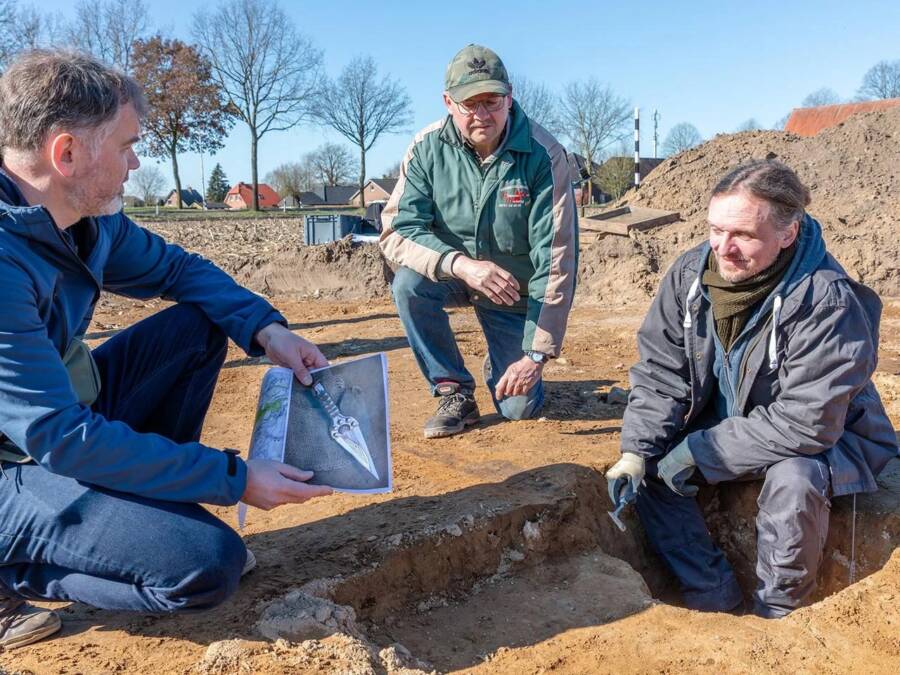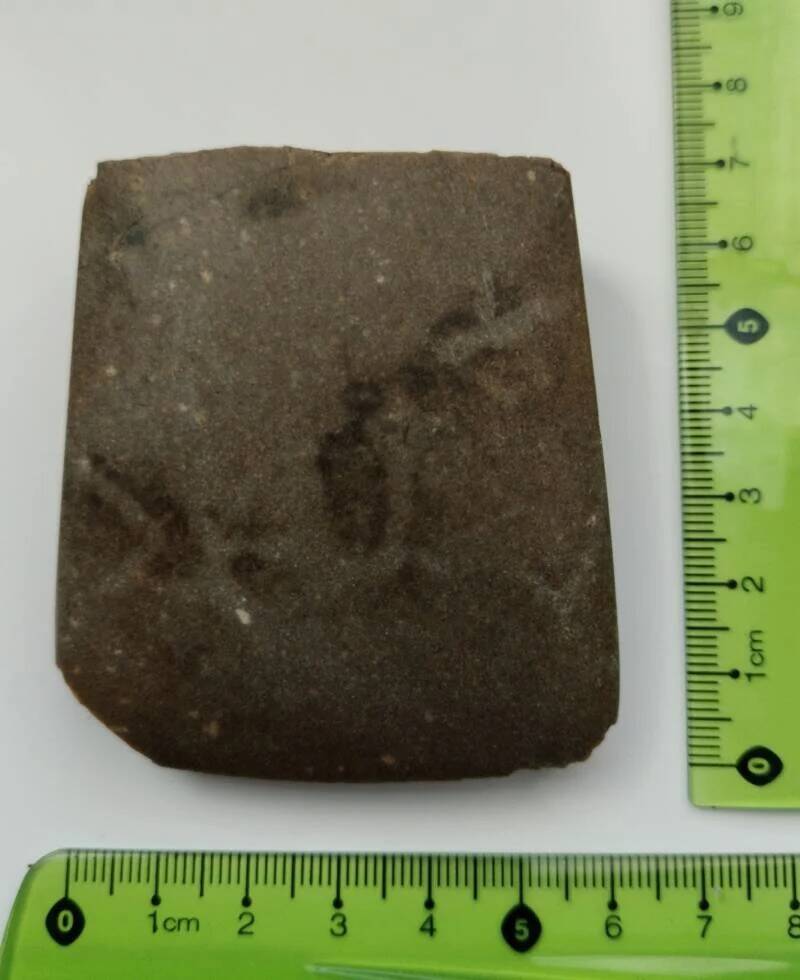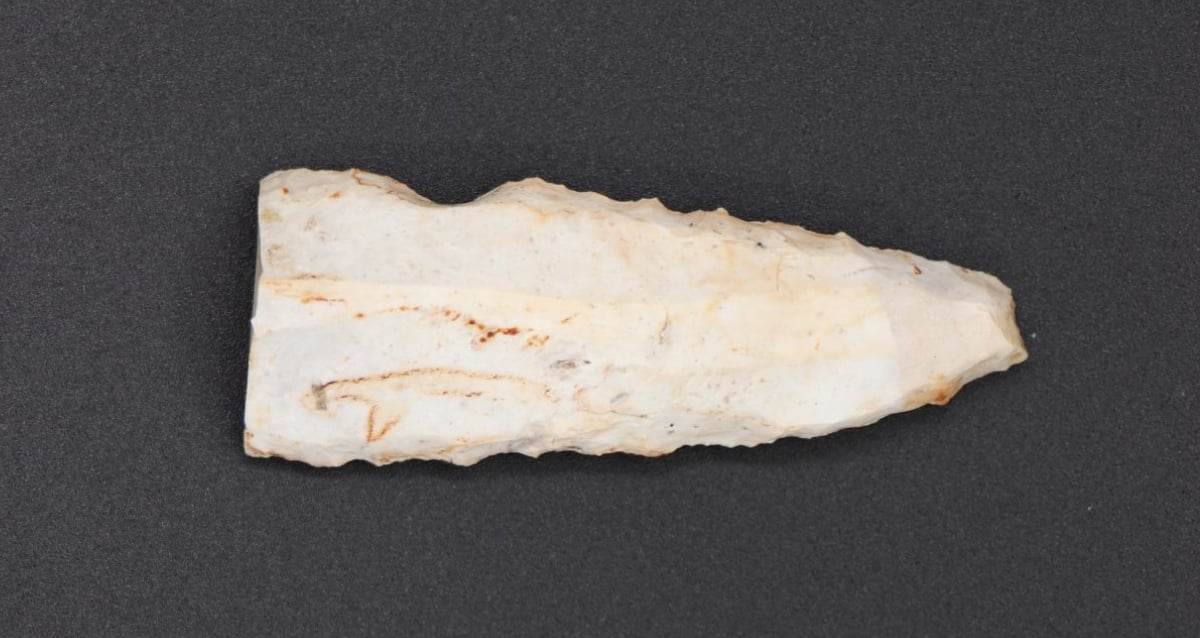Mysterious 4,500-Year-Old Flint Blade Unearthed by Amateur Archaeologists in Northern Germany Sparks New Questions About Ancient Life
As Archaeology News reported, researchers were first clued in about the potential for discovery after a metal detectorist found bronze pieces in the field back in 2017.
Then, in 2023, University of Hamburg researchers began conducting geomagnetic surveys of the field. This process allowed them to detect any subsurface anomalies without needing to dig. When they detected two large buried objects in the field, it prompted them to whip out the shovels.

Stade District/Christian SchmidtResearchers at the dig site, holding a photograph of what the daggers may have once looked like.
Buried at a depth of about 11 inches were the daggers, which remained in shockingly good condition given how long the field had been used for agricultural purposes.
District archaeologist Daniel Nösler thus called the discovery a “stroke of luck.”
The daggers were made of bronze and dated to around 1500 B.C.E., roughly the same time as the famous Nebra Sky Disk. Though they had long decayed, experts said the blades were most likely once attached to wooden handles. Moreover, they determined that the blades “likely had ritual significance with a religious or ideological background.”
And in 2024, in neighboring Poland, another stone blade of almost the exact same vintage as the Münsterland blade was found in a raspberry patch.
Ancient Axe Head Discovered By Polish Man Weeding His Raspberry Patch

Lublin Provincial Conservator of MonumentsThe ancient axe head found in a Polish raspberry bush.
As All That’s Interesting reported, in May 2024, a Polish man weeding his raspberry patch made the serendipitous discovery of an ancient, 2.5-inch axe head that similarly dated back 4,500 years.














Post Comment